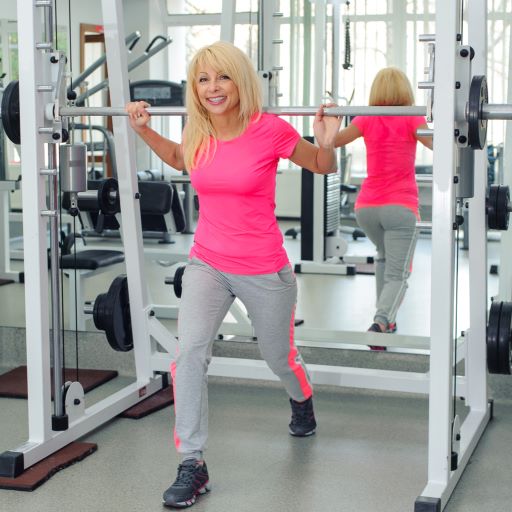Approximately 30% of all postmenopausal women in the U.S. have osteoporosis. At least 40% of these women will sustain 1 or more osteoporotic fractures. To make matters worse, 1 in 3 people will die within 12 months of a hip fracture. This sounds bleak but there is hope. Exercise is the only strategy that improves all modifiable risk factors (bone strength, fall risk, and fall impact). Strength training is the best preventative medicine for osteoporosis-related fractures. This article describes how to start strength training exercises for osteoporosis.
High-Intensity Strength Training Proven to Increase Bone Strength
A recent study from Australia looked at over 100 post-menopausal women with low bone mass. Researchers placed each participant in 1 of 2 groups. One group performed a low-intensity stretching and balance exercise program. The other group performed high-intensity strength and impact training. Both groups trained 2 times per week for 8 months.
At the end of the study, the strength training group showed significantly greater improvements. Strength training lead to large improvements in spine bone density, hip bone density, height, leg strength, balance, walking speed, and power. No adverse events occurred in any participant. The remainder of this article highlights the key principles and exercises used in this study.
5 Important Strength Training Principles for Optimal Bone Health
- Principle of Specificity. Bone responds to loads applied at specific sites not generally to all bones. Exercises are always aimed toward specific bones prone to fracture. These sites are the bones of your spine, hips, and wrists.
- Principle of Progressive Overload. Loads (or weights) during exercise must exceed what is encountered during your normal daily activities. For example, walking does very little to improve your bone health. However, walking with a weighted backpack that is incrementally made heavier over time improves your spine bone density.
- Principle of Reversibility. Any improvement in bone strength from exercise is lost once the program is stopped. You can never stop exercising or else all your improvements will be lost.
- Principle of Initial Values. People with the lowest bone density will see the greatest improvements from strength training. This is not to say that people with mild bone density loss can’t benefit from exercise. You just need a greater stimulus to see gains.
- Principle of Diminished Returns. Your improvements in bone density from exercise will slow over time. However, if you follow the other 4 principles, especially progressive overload, all improvements will be meaningful.
3 Foundational Strengthening Exercises for Osteoporosis
Large multi-joint exercises done in weight-bearing positions are ideal to stimulate changes in bone. Examples are squats, lunges, deadlifts, and weighted carries. These exercises apply large loads at important bone sites like your spine and hips. First, proper exercise technique is most important. Then it is crucial you increase weights and loads progressively over time.
For bone health, it is best to perform weight-bearing exercises with heavy loads using a few repetitions spaced out over multiple sets. Based on the study done in Australia, we recommend 5 sets of 5 repetitions for each exercise. Take long rest breaks between sets (2 to 5 minutes). Heavier loads applied for brief periods spaced out are best for stimulating bone. This is why long-duration aerobic exercise is much less beneficial for improving bone density.
Always use the proper exercise form. With this in mind, increase the weight used in each exercise once you feel like you can safely do 6 or 7 reps in a set. Perform each exercise a minimum of 2 times each week. How long should you do them for? Do them for the rest of your life.
Exercises for Osteoporosis: Get More Help from Your Physical Therapist
If you have been diagnosed with osteoporosis or if it runs in your family, you need to take exercising seriously. Make it a habit to exercise with weights. Stretching, pool exercises and walking is not enough. Bone remodeling requires heavy loads applied progressively over time.
If you are having trouble with these foundational exercises, you need to work with a physical therapist. Your physical therapist will help you develop the right exercise program based on your abilities and goals. The physical therapists at BSR have been helping people in Southern Ocean County move without pain since 2007. Call us today and schedule your initial evaluation.


